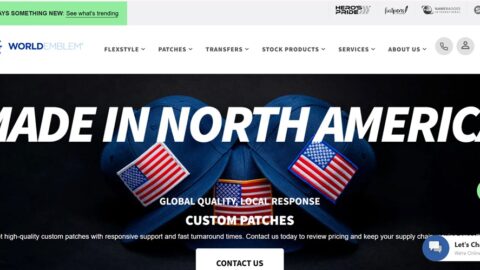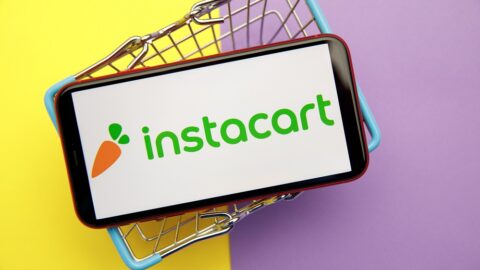Labor shortages, stressed supply chains and a major emphasis on ecommerce have turned fulfillment into one of the biggest challenges retailers will face in the 2021 holiday season. Kearney expects holiday 2021 ecommerce sales to hit $206 billion, an increase of 12% to 13% over the previous year — and that’s on top of the 32% year-over-year surge in digital sales recorded by Adobe Analytics in 2020.
With so much at stake, retailers must get fulfillment right or risk being left behind. Several key strategies to keep in mind for this unique holiday season include:
- Bring the last mile close to home: It’s not easy to fulfill orders from stores, but getting the right data and putting it to use can simultaneously reduce costs, speed up deliveries and fight back against the supply chain crunch;
- Offer multiple options for speed: Shoppers are aware of the existing last mile challenges but they still want fast and affordable shipping, so it will be up to retailers to offer multiple convenient methods to minimize delivery windows; and
- Eliminate friction where you can: Retailers have relatively little control over last mile delays so they must make the parts of ecommerce that they do control — including ease of ordering and inventory visibility — all the more accessible to consumers.
Store-Based Fulfillment Is Key, but the Right Tools Must Be in Place
Microfulfillment centers and store-based fulfillment in general will be vital tools this holiday season for achieving both speed and convenience. Retailers have been steadily bringing staging points closer to the shopper through smaller dedicated warehouses and by fulfilling orders directly through stores, and now the networks they’ve built will be put to the test. Stores in particular will be essential to last mile success.
“Setting up a forward-deployed depot is more expensive than leveraging the current retail store for the same purpose,” said Alberto Oca, Partner in the Strategic Operations practice of Kearney in an interview with Retail TouchPoints. “Leading retailers are standardizing assortment online and in stores to reduce complexity. ‘Last yard’ continues to the be the most expensive cost in the supply chain. It’s all about impacting this, so retailers are retrofitting their stores’ backroom footprint to house more product more efficiently.”
That said, retailers need to put in work for truly convenient, cost-effective store-based fulfillment. A Coresight Research survey of mall-based retailers found that 73% found store-based fulfillment challenging (even as 38% offered it to their customers). A strong store-based fulfillment program requires a “single source of inventory truth, which is very challenging,” said Marie Driscoll, Managing Director, Luxury & Fashion at Coresight Research in an interview with Retail TouchPoints.
Oca called on retailers to take a “closer look at the shape of demand, and learn how to offset its uncertainty with available data-science backed capabilities that can help prediction of geo-specific demand shifts to inform supply chains and assortment shifts.” Additionally, data analytics can help shape inventory assortments at stores with similar demographic clusters.
Data also can help retailers make the most of whatever inventory they already have in warehouses as shipping capacity becomes more limited during the busy season. Having advance notice of what items are available in which regions, as well as what items are selling in which regions, provides an opportunity to achieve correct inventory levels using less expensive methods than acquiring “fresh” products.
“You can shift inventory around for the holiday,” said Hilding Anderson, VP, Head of Retail Strategy, North America at Publicis Sapient in an interview with Retail TouchPoints. “If you know you have inventory on the West Coast but don’t expect orders to come from these stores, you might choose a cheap shipping method to move 50 pallets from your Los Angeles warehouse to your New Jersey warehouse, so that you can then cheaply fulfill the East Coast orders from that West Coast warehouse.”
Relevant data should be shared with associates to help them handle the extra workload from store-based fulfillment. This means connecting in-store associates to the omnichannel ecosystem so they’re aware of incoming BOPIS and curbside orders, according to Amy Tennent, Senior Director, Product Management at Manhattan Associates. It also calls for rethinking operations to let both fulfillment and in-store shopping run in harmony.
“Improve the process with dedicated people and dedicated in-store locations that don’t interfere with in-store shoppers,” said Driscoll. “Associates that are fulfilling online orders in-store are frequently interrupted by shoppers that need assistance, so it is ideal to schedule fulfillment to times of the day when shoppers aren’t in the store. For curbside, retailers should work with the shopping centers for a central pickup/drop-off spot.”
Ultimately, fulfillment during the upcoming holiday season is going to be about making the most of what resources retailers have available. The pressures on the industry will make this period a challenge, but those that can rise to the occasion will be rewarded with a share of this year’s massive ecommerce spend.
Offer Same-Day When Possible, and Plenty of Choices Otherwise
The omnipresent impact of Amazon Prime is still in full effect, meaning shoppers aren’t going to wait for weeks when they’re used to getting their orders almost immediately. A survey by Coresight Research found that 20% of shoppers plan to use same-day delivery during the holidays. It will be a challenge for any retailer to offer reliable same-day delivery, but those that can do so will have a significant advantage.
“In the end, it comes down to increasing consumer expectations and offering more convenience when shopping online,” said Kearney’s Oca. “Same-day delivery options at checkout also increase likelihood of purchase by 15% to 35%, which is attractive for retailers. It is expensive and consumers still do not want to pay for this. So the secret to reducing same-day delivery cost is scale — to that end, the higher the number of shipments per day, the lower the variable costs per item.”
Same-day is important, but retailers can expect some relief after last year’s delays primed shoppers to expect a slower holiday season, according to Publicis Sapient’s Anderson. The key is to offer other incentives that benefit both the shopper (often related to convenience) and the retailer (cutting costs). In the future this may include offering to have multiple orders delivered together if the customer can wait a couple of extra days, or small financial incentives for choosing a slower shipping option, but this holiday buy online, pick up in-store (BOPIS) will be the top choice.
“There are no questions that retailers have gotten a lot better at [BOPIS],” said Anderson. “It’s essentially ubiquitous right now across all retailers and it’s one of the most effective ways for retailers to deliver purchases. It has the convenience that consumers want and it’s much more profitable than delivery. Because it goes through the store network, it requires very little change in the existing supply-chain-warehouse-to-store-fulfillment structure, which is already quite efficient. It’s a win for consumers and retailers.”
The Coresight Research survey revealed that 26% of shoppers plan to utilize BOPIS during the holidays. Additionally, logistics companies like USPS already have announced delivery surcharges during the holidays, so keeping fulfillment in-store as often as possible can help retailers minimize this pain point.
Ease of Ordering and Transparency are More Important Than Ever
It’s going to be hard to avoid last mile delays this holiday season, but retailers can still take steps to minimize friction in other parts of the customer journey. “Friction-free experiences are expected by consumers, and falling short of this expectation drives frustration, cart abandonment and lost sales,” said Coresight’s Driscoll. “For retailers, friction-free is more of an aspiration than a realization, but many retailers and brands are pursuing this goal. Mobile-based solutions are intrinsically consumer-centric and allow for a superior customer experience across multiple touch points, but the consumer opting in is necessary, as is excellent in-store connectivity.”
Another essential ingredient in keeping shoppers happy amid the current slate of challenges is transparency. Shoppers will know which fulfillment method is most convenient for their needs better than any retailer, so they need all their options laid out plainly — and as early as possible in their shopper journey. Manhattan Associates’ Tennent identified some of the choices every retailer should offer right on their product detail page:
- What options do I have?
- When do I need to order it by to have it by this date?
- If I order it now, when will it be delivered?
- Can I pick it up at curbside?
- Can I pick it up at a locker?
This can assure shoppers that they are getting what they want in the quickest and most convenient way possible. Of course, retailers also must provide accurate, up-to-the-moment data, particularly for timely items like gifts.
“The challenge is to have the customer’s options upfront by having real-time solutions in place that dynamically paint their options,” said Tennent in an interview with Retail TouchPoints. “It should know your zip code, your delivery date. It should know what locations have [the items] in their inventory for if you want to pick it up in this store or that store. It’s a challenge because it requires systems that you can call in real time to have the most accurate picture.”













